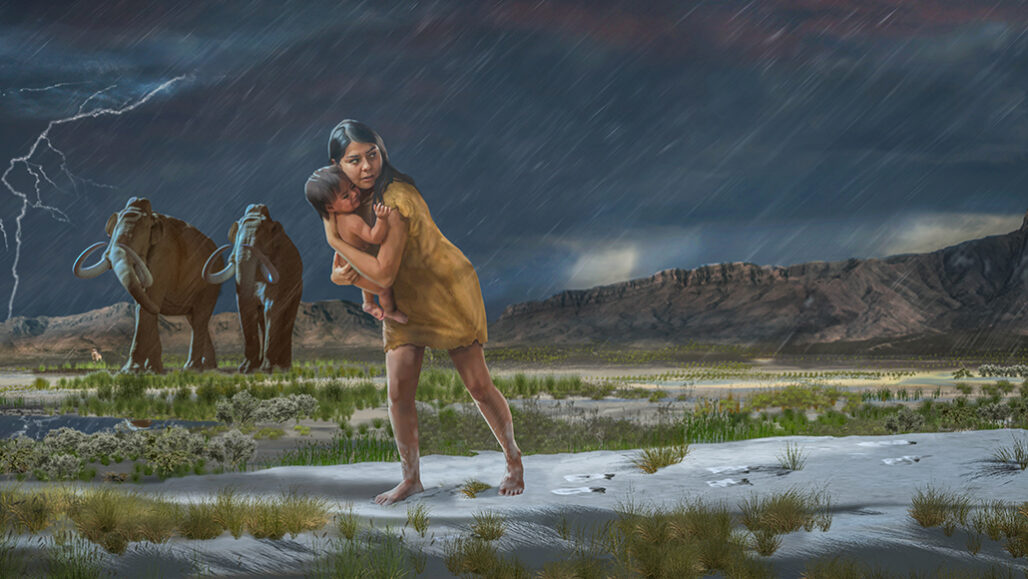An international team of scientists has found evidence of an interaction between Ice Age humans and now-extinct giant ground sloths.

White Sands footprints tell the story of a group of humans tracking and hunting a giant ground sloth. Image credit: Alex McClelland, Bournemouth University.
The team found and analyzed fossilized footprints of ancient humans — adults and children — at White Sands National Monument in New Mexico; and those human footprints were actually inside footprints of a giant, razor-clawed ground sloth (Nothrotheriops or Paramylodon sp.).
“The site consists of more than a hundred sloth and human tracks,” the researchers said.
“The sloth tracks — 1.2 to 2 inches (3-5 cm) deep, 12 to 22 inches (30-56 cm) long, and 4 to 14 inches (10-35 cm) wide — are readily distinguished from human tracks based on their elongated kidney-shaped tracks and claw marks.”
“The White Sands trackway shows that someone followed a sloth, purposely stepping in their tracks as they did so,” said team member David Bustos, naturalist with the National Park Service.
“The ancient humans stalked the sloth,” added team leader Professor Matthew Bennett, of Bournemouth University, UK.
“We see interesting circles of sloth tracks in these stalked trackways which we call ‘flailing circles.’ These record the rise of the sloth on its hind legs and the swing of its fore legs presumably in a defensive motion.”

Human footprint inside giant sloth track at White Sands National Monument. Image credit: National Park Service.
At 7-8 feet (2.1-2.4 m) tall, tightly muscled and swinging fore legs tipped with wolverine-like claws, the sloth would tear apart any hunter on direct approach. But in addition to tracks of humans following the sloth, there are more human tracks a safe distance away telling the scientists that this was a community action making use of distraction and misdirection to gain the upper hand in close-quarter combat.
“The tracks show the sloth was turning and swinging at the stalker,” Professor Bennett said.
“We also see human tracks on tip toes approach these circles; was this someone approaching with stealth to deliver a killer blow while the sloth was being distracted? We believe so.”
“It was also a family affair as we see lots of evidence of children’s tracks and assembled crowds along the edge of the flat playa.”
“Piecing the puzzle we can see how sloth were kept on the flat playa by a horde of people and distracted by a hunter stalking the sloth from behind, while another crept forward and tried to strike the killing blow as the animal turned.”
“The thing that is special about these prints and sets them apart from any other fossil trackways in the world is that this discovery records the interaction between humans and Ice Age giant megafauna, and White Sands National Monument has the largest concentration of human and Ice Age giant megafauna prints in the Americas,” Bustos said.

Top: mosaic of part of the study site showing two ‘flailing circles’ as well as sloth and human composite tracks. Bottom: interpretation of trackway trajectories. Image credit: Bustos et al, doi: 10.1126/sciadv.aar7621.
The Ice Age ended about 11,700 years ago and the fossil record of giant ground sloths indicates they were extinct by this time.

At White Sands, the team used an approach called relative dating to estimate a minimum age for the fossils.
“Since the footprints are contemporaneous with animals that died out by the end of the Pleistocene, relative dating tells us those footprints are at least 11,700 years old, or older,” said team member Vincent Santucci, senior paleontologist of the National Park Service.
Source: sci.news





